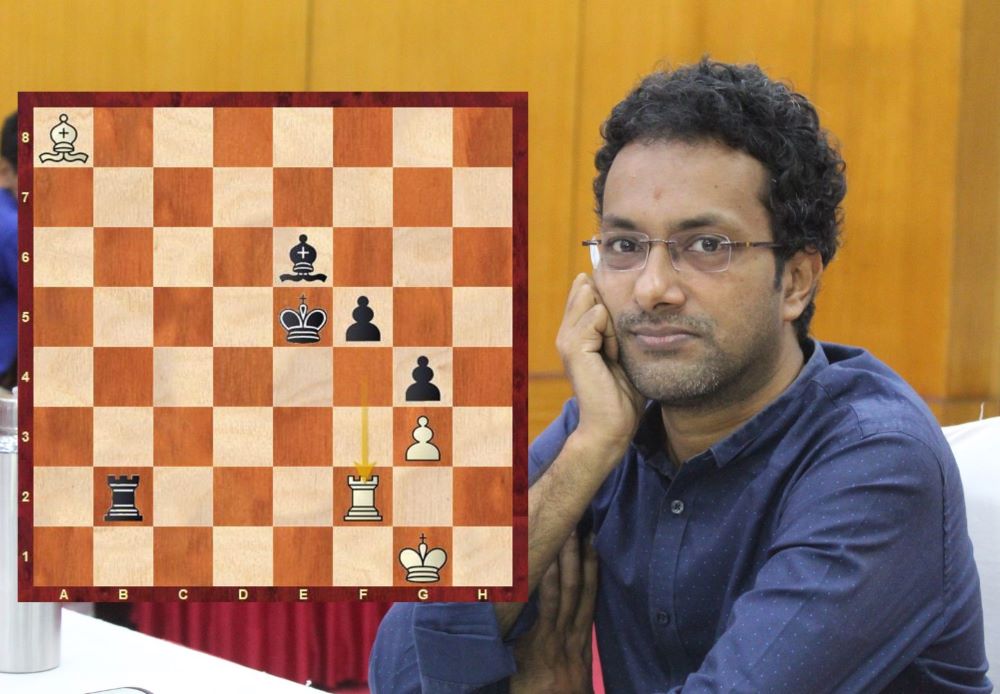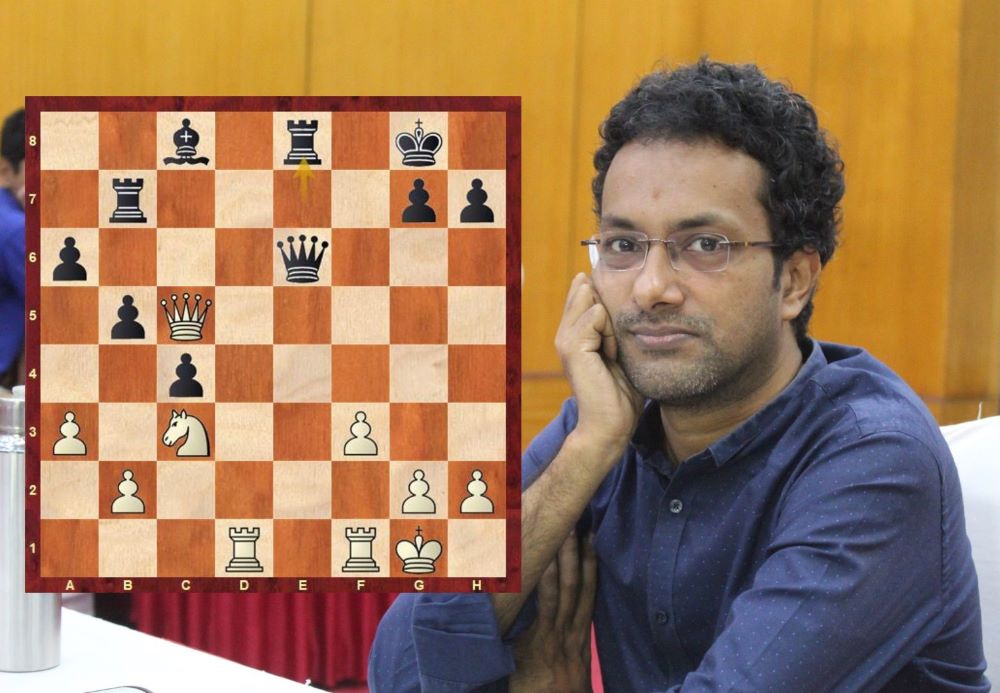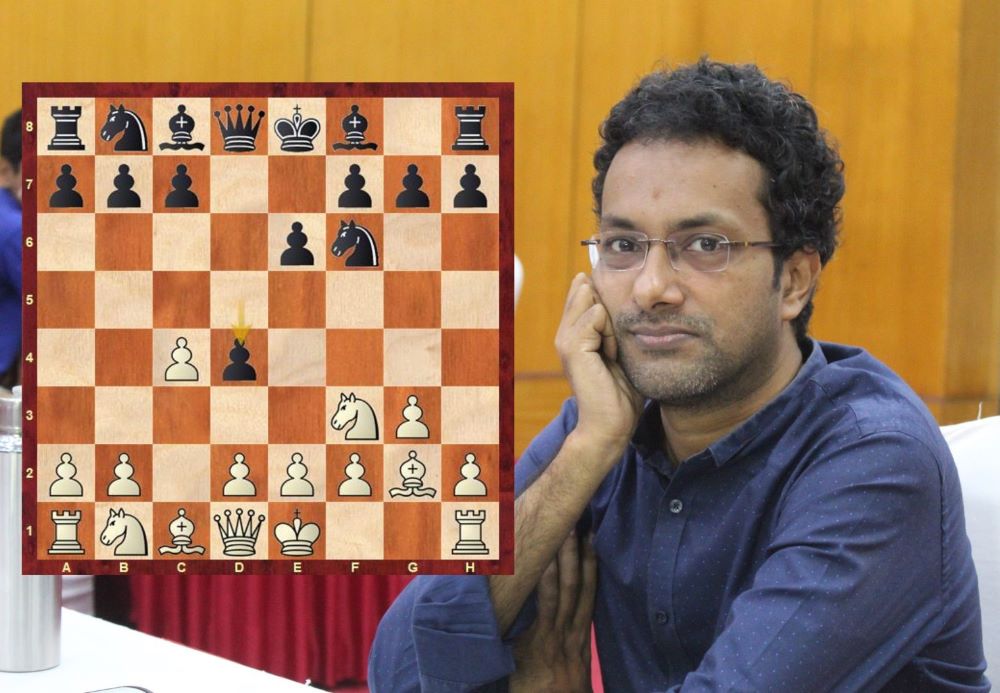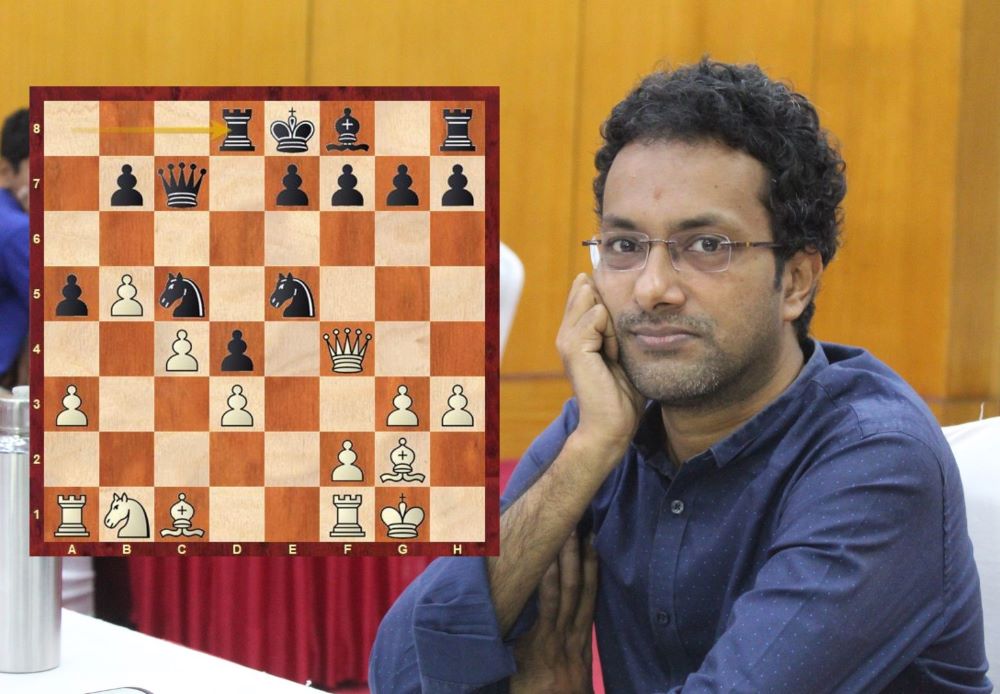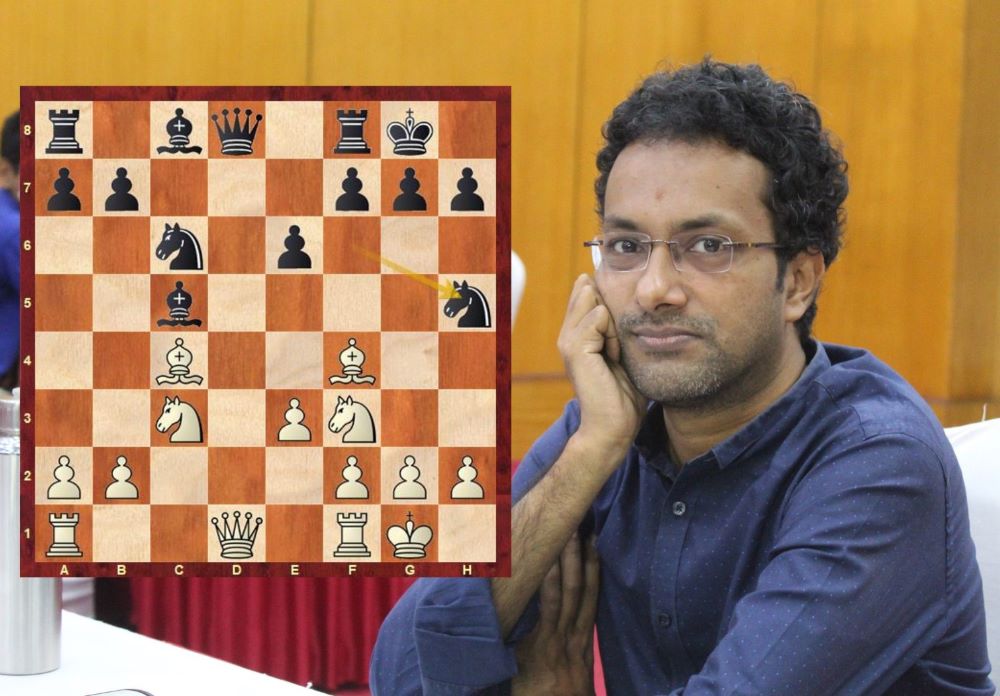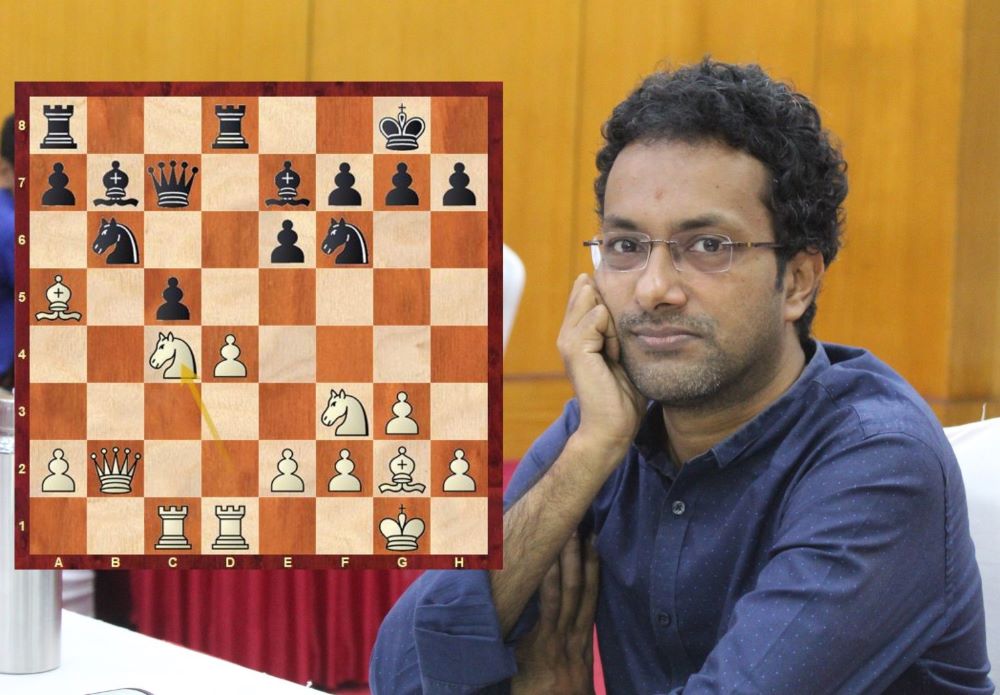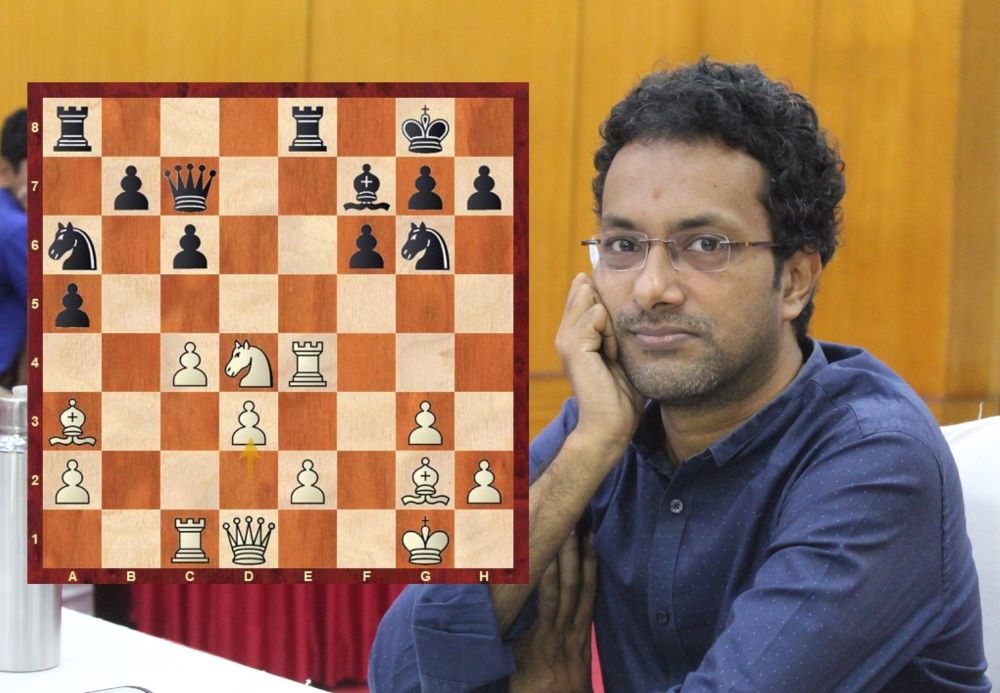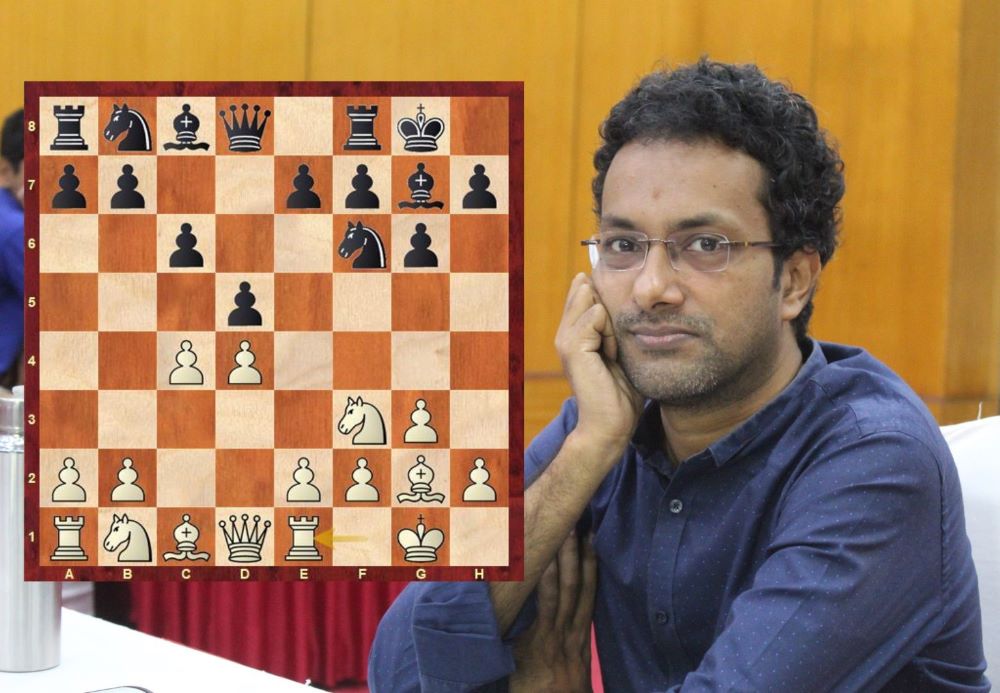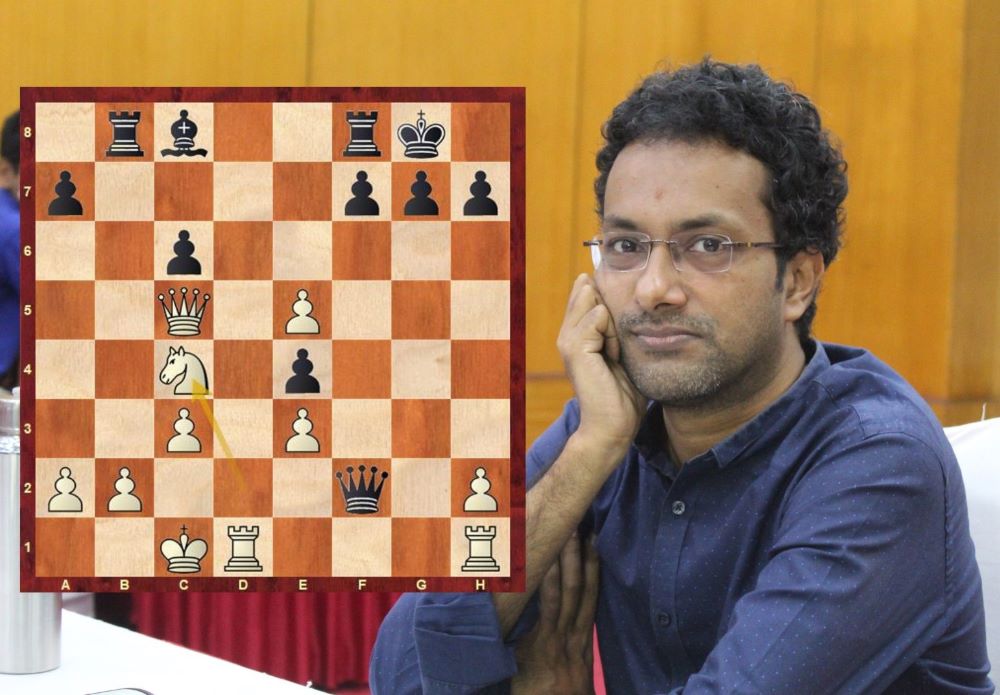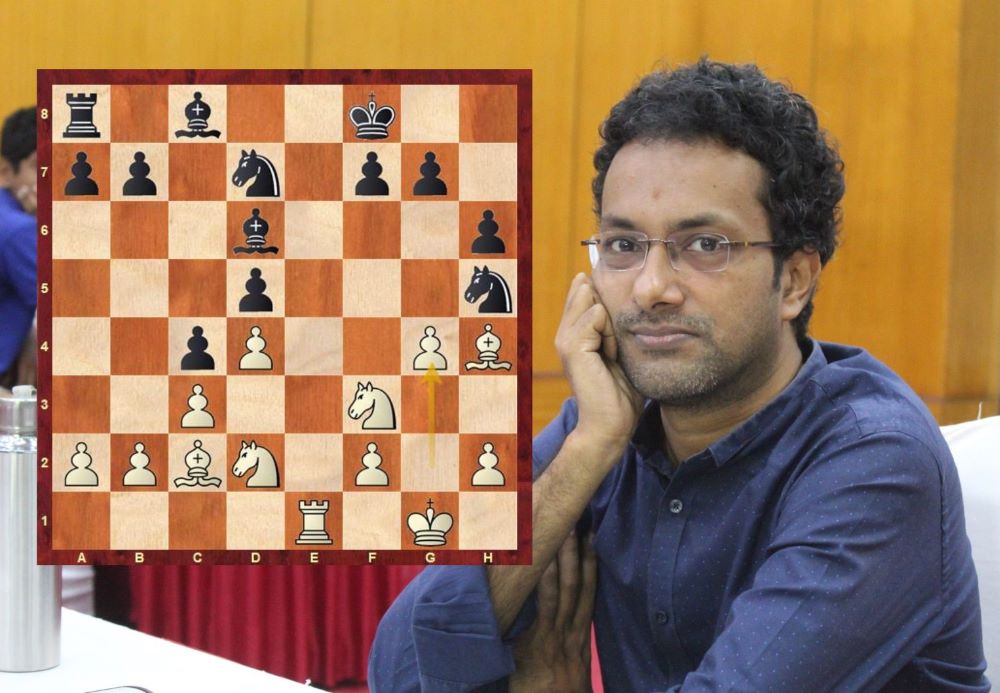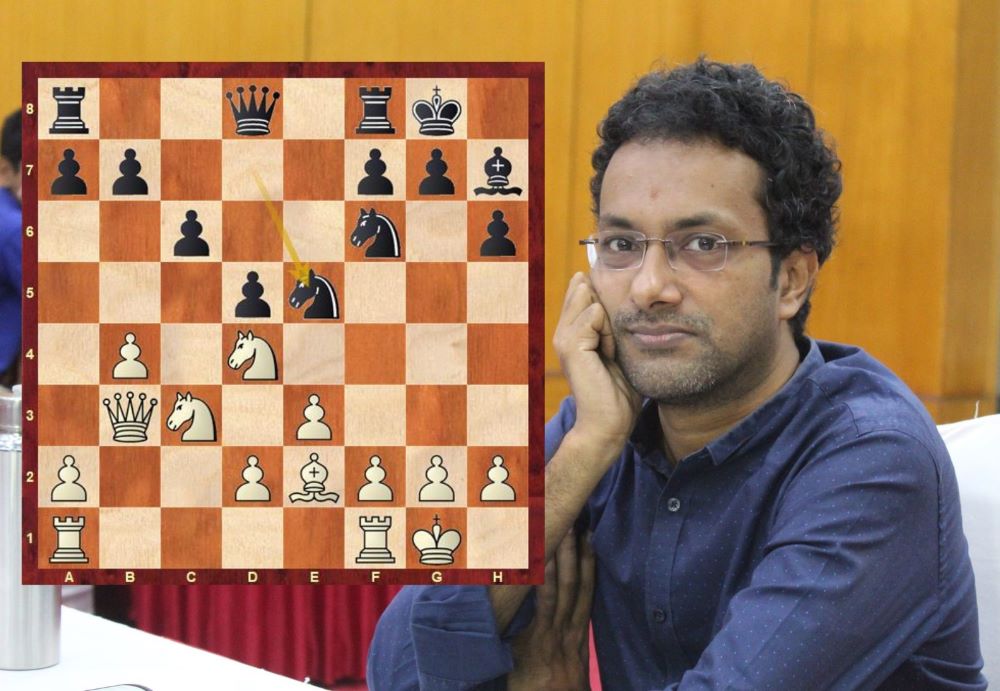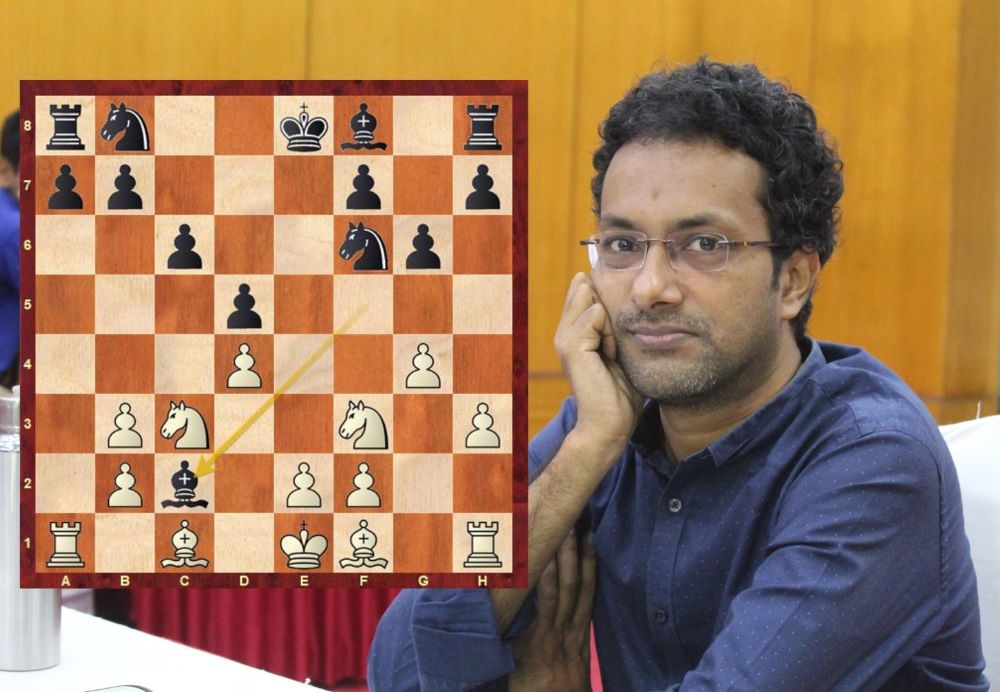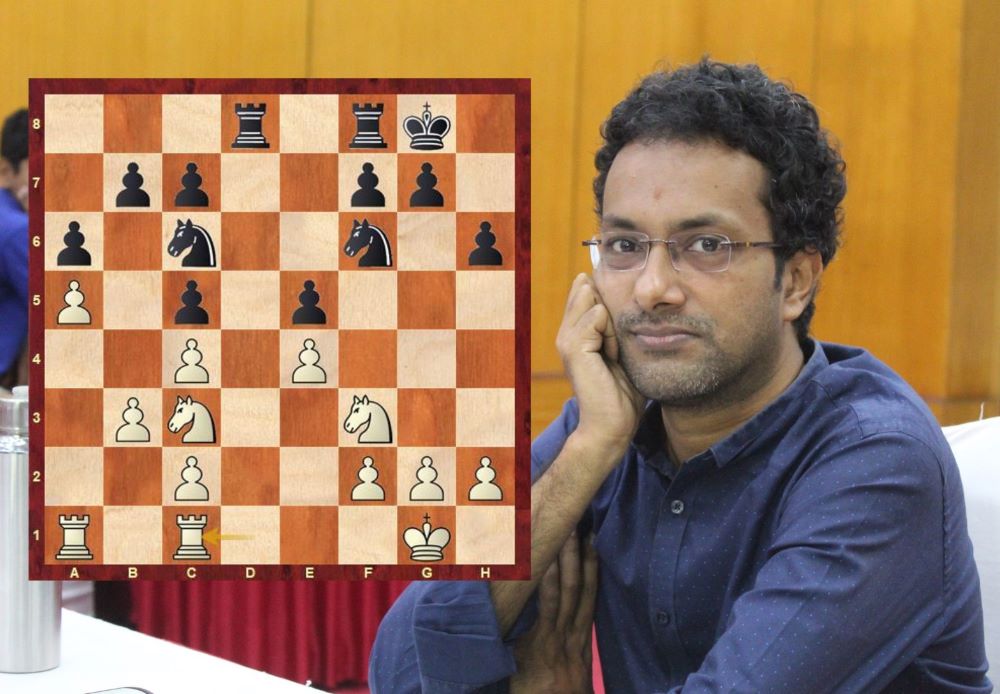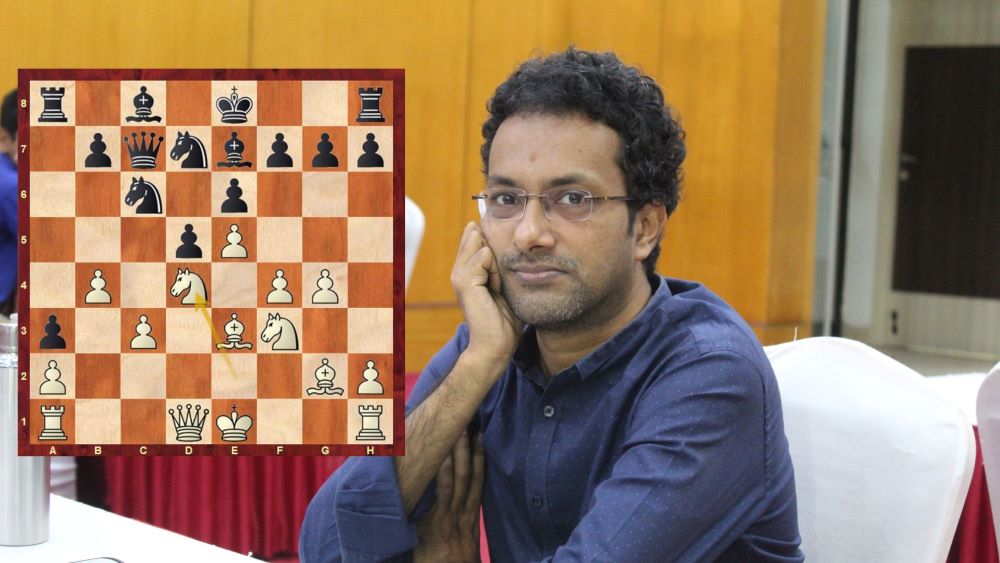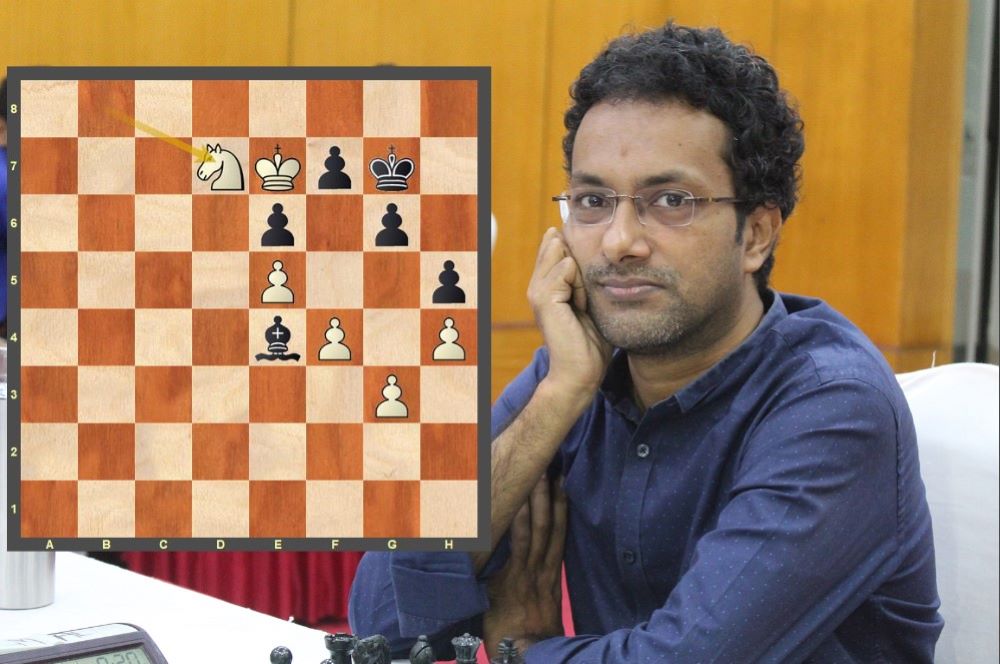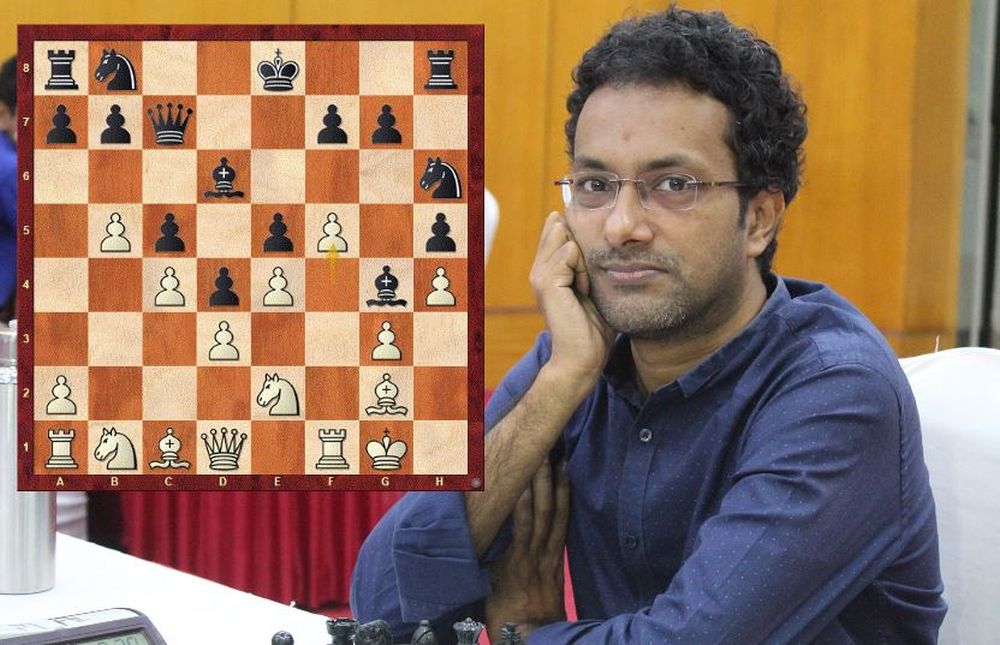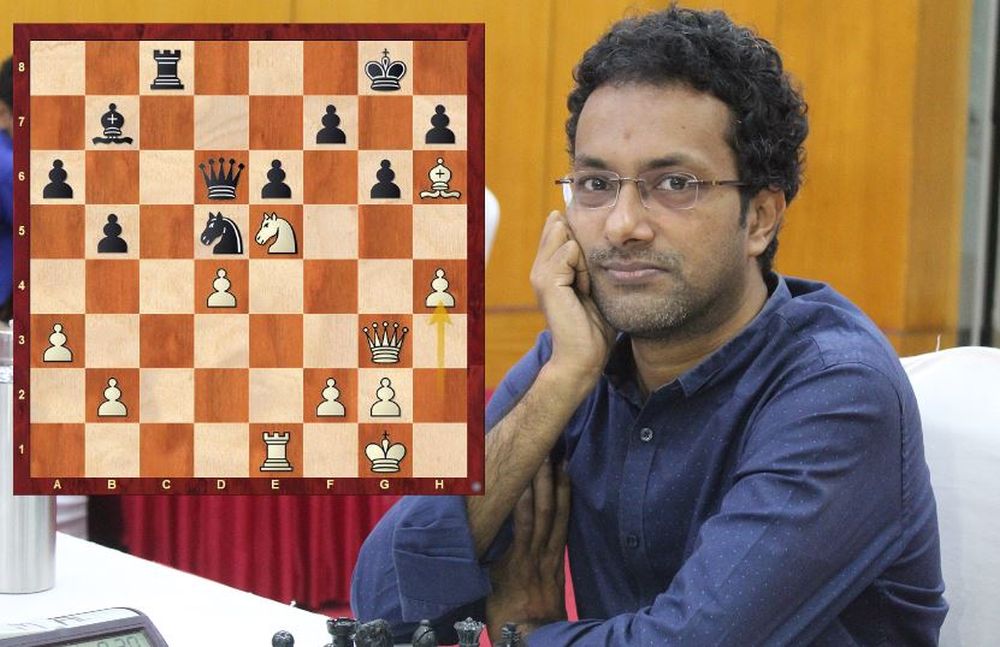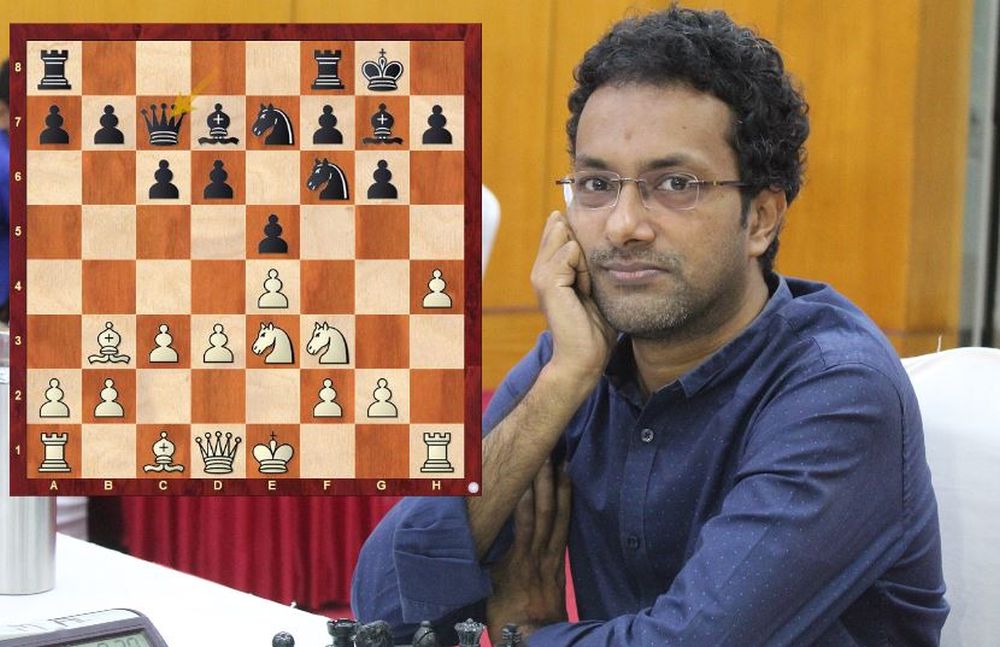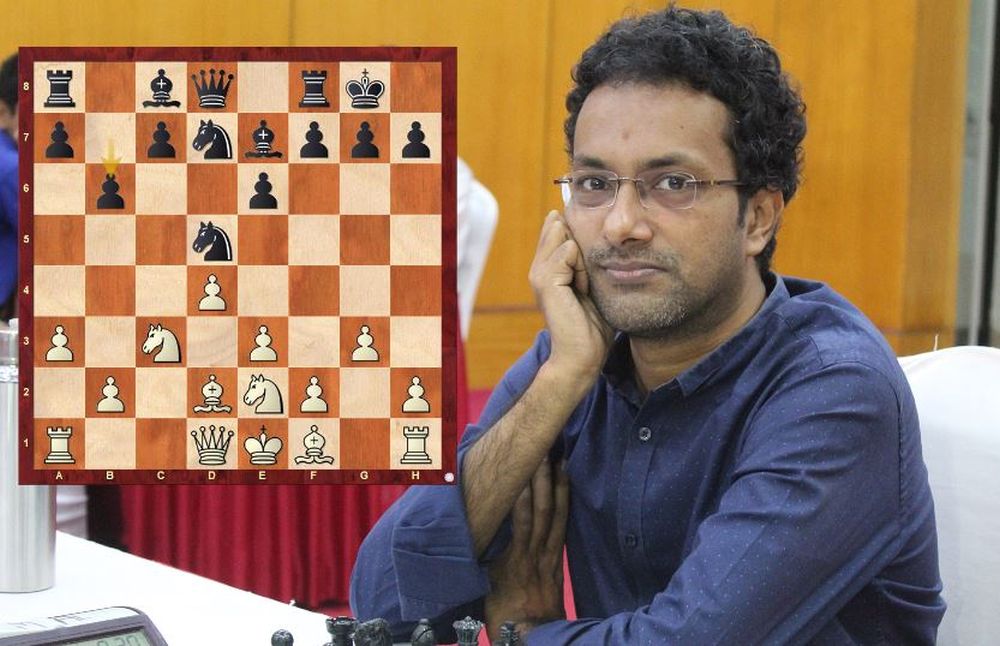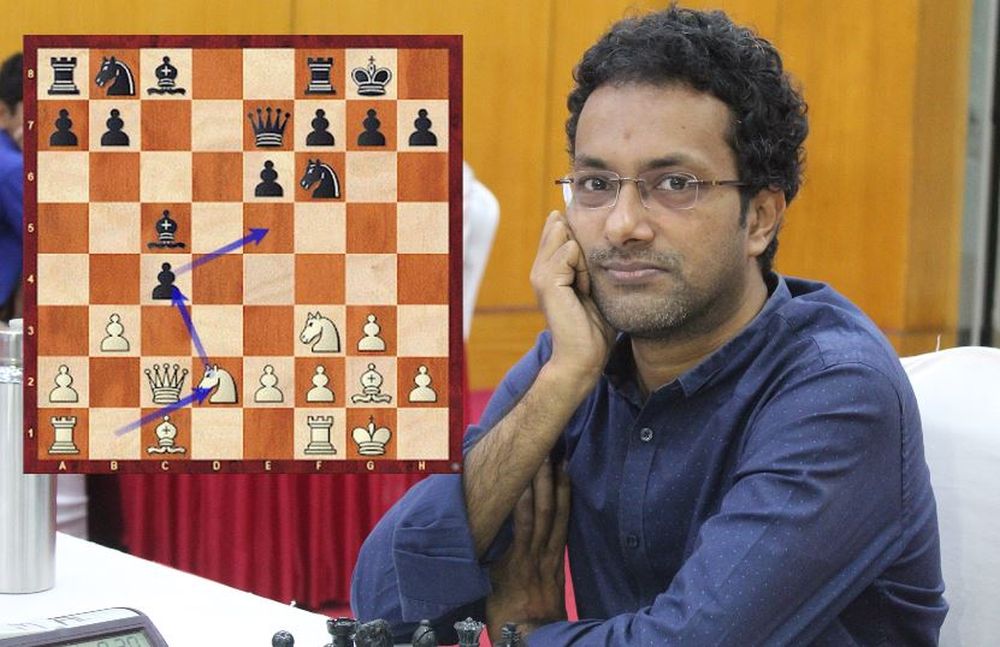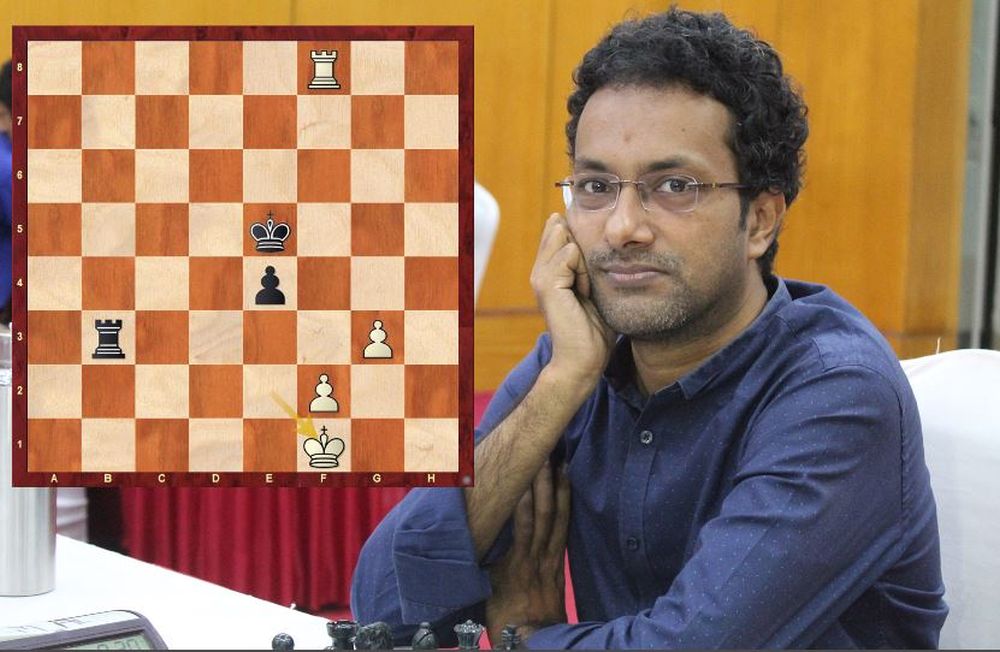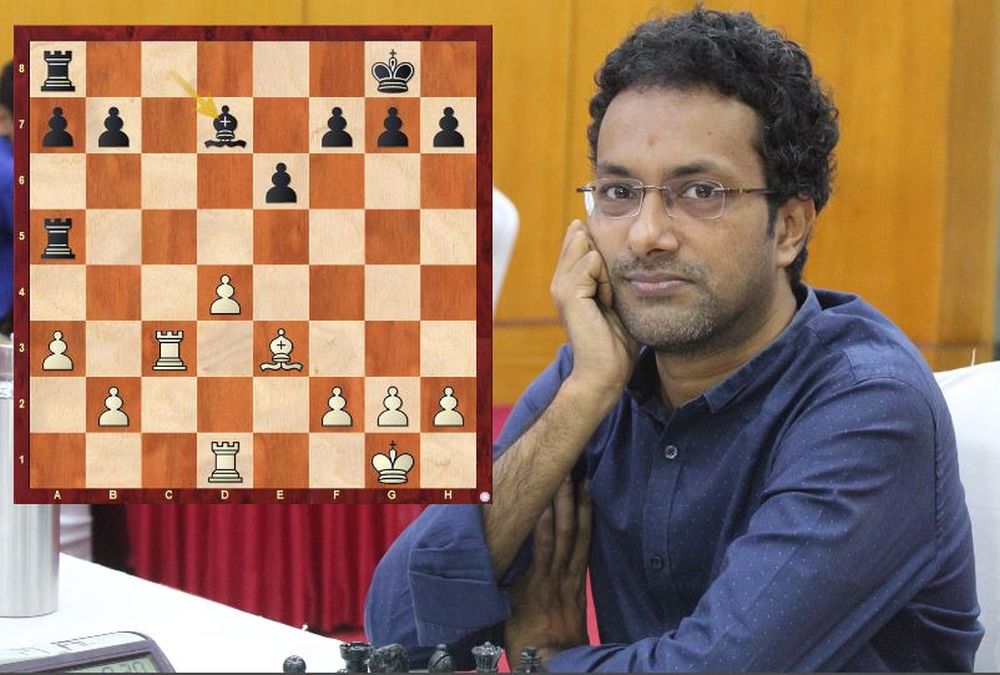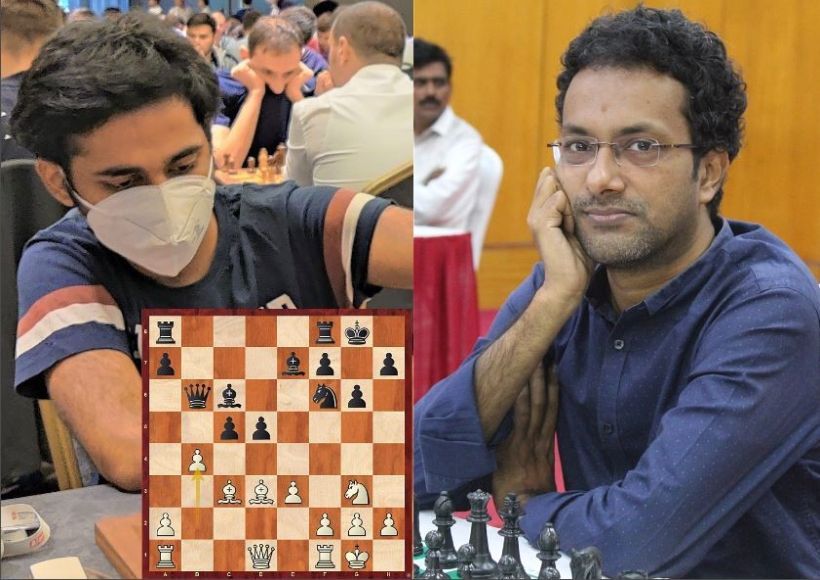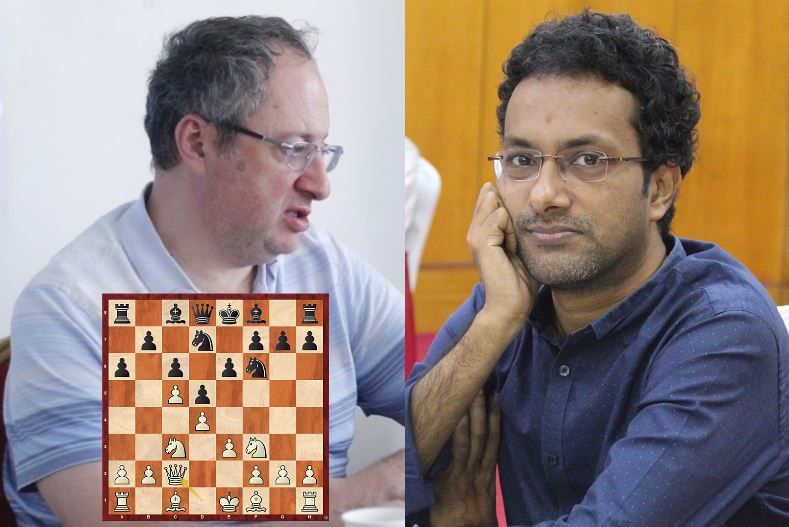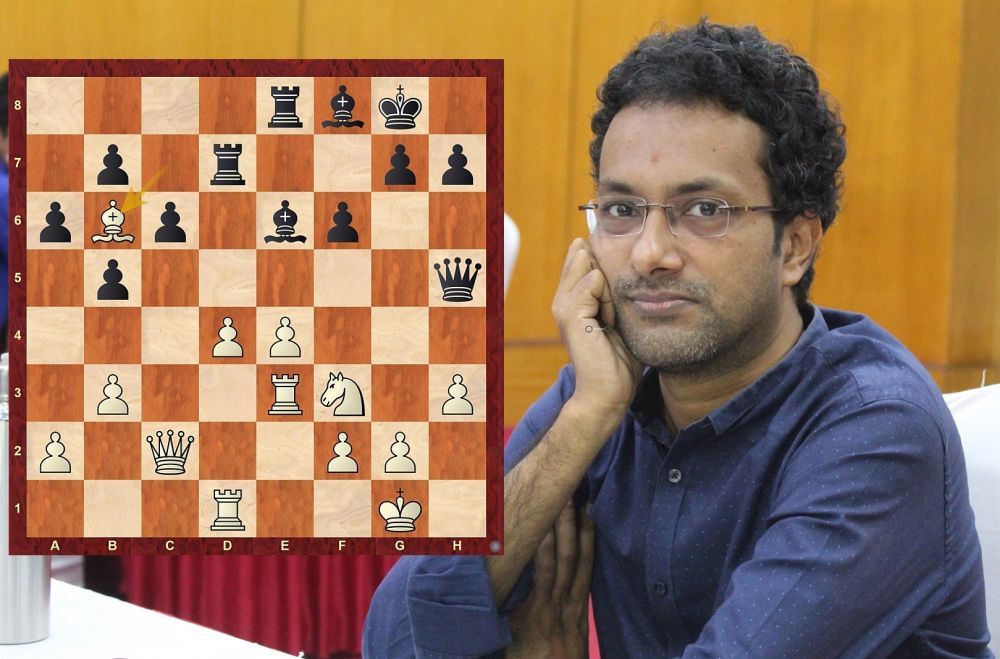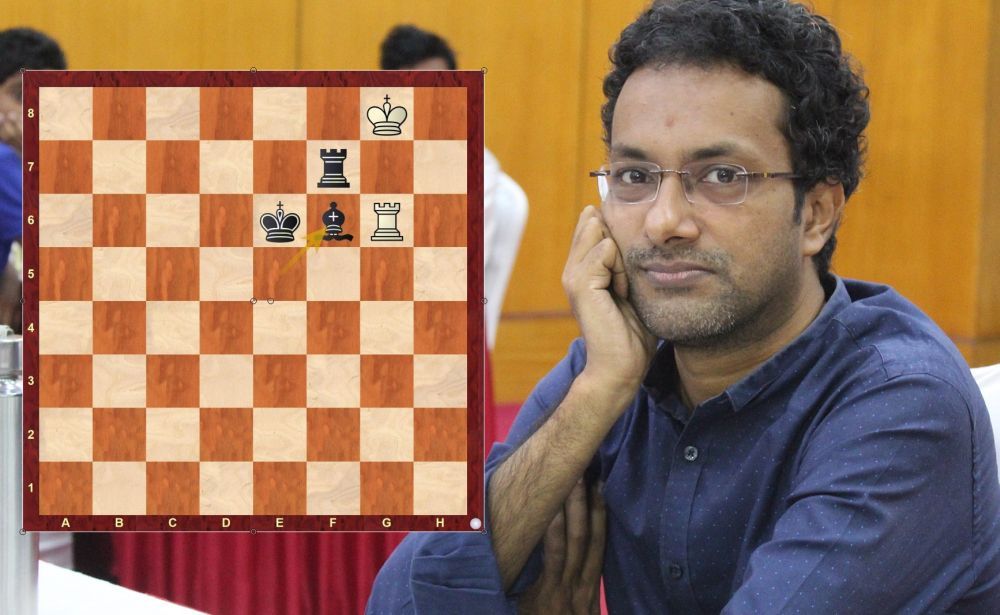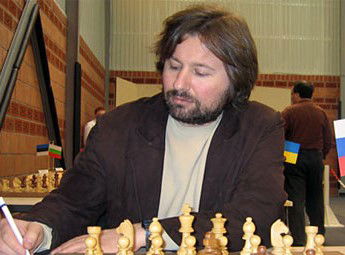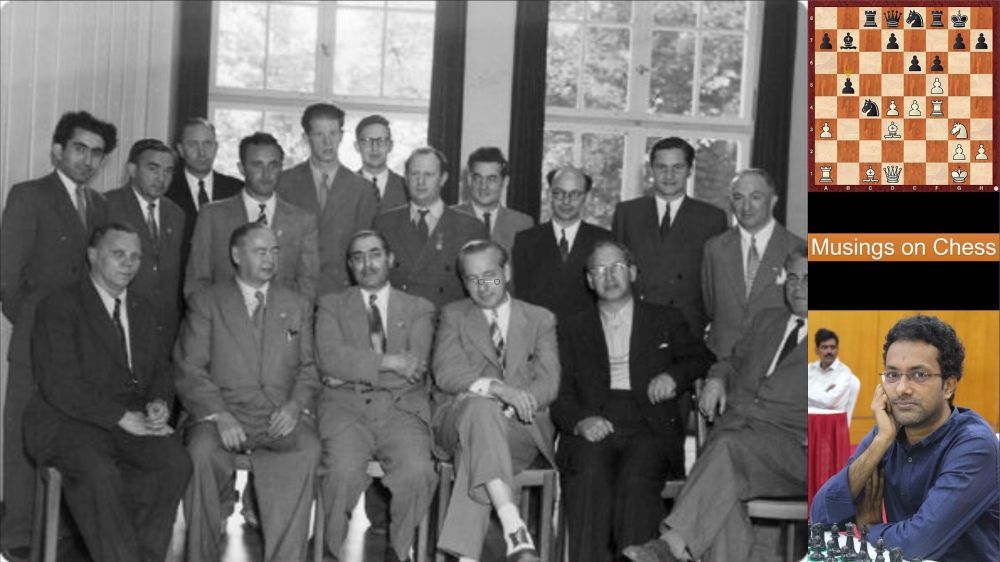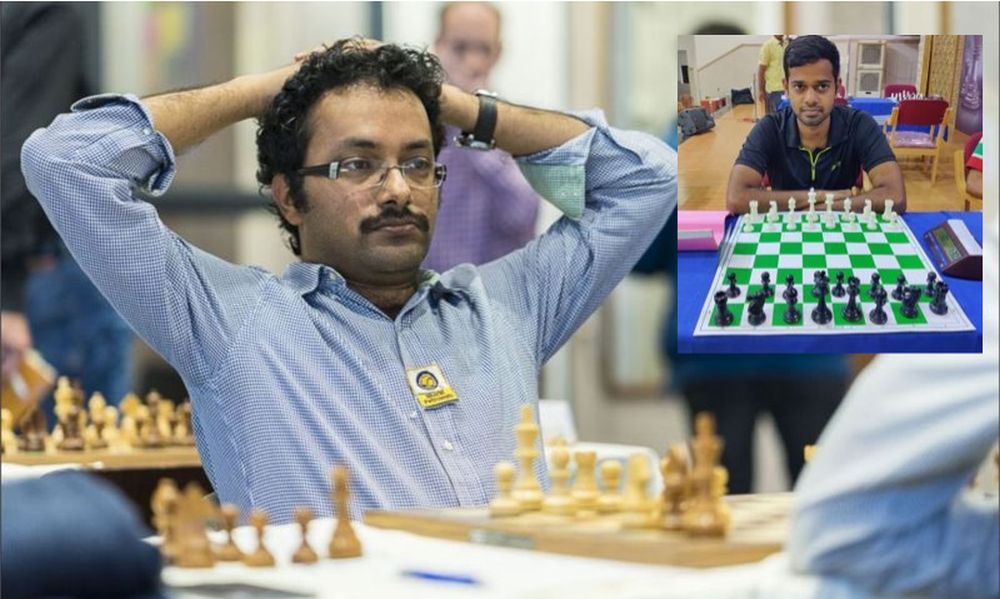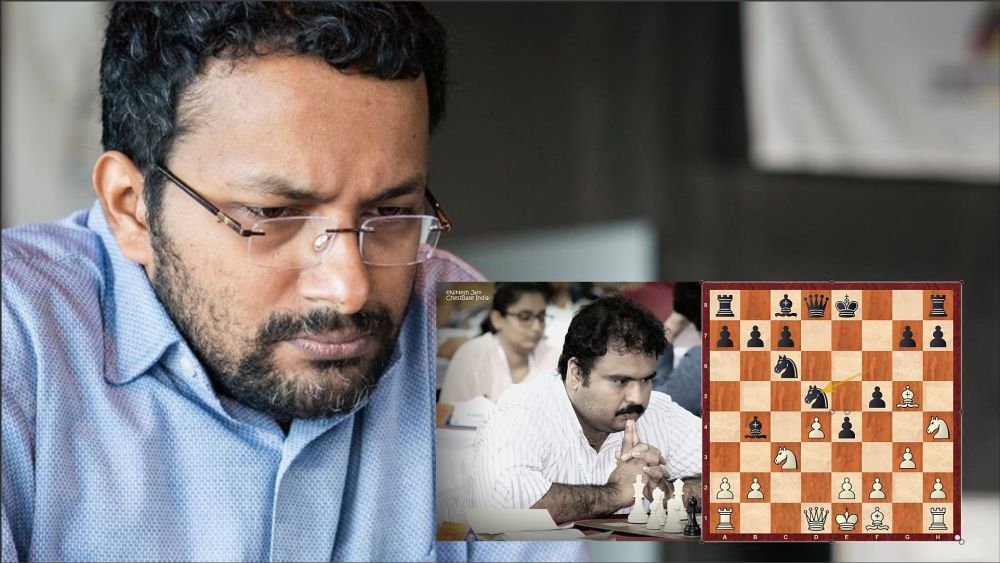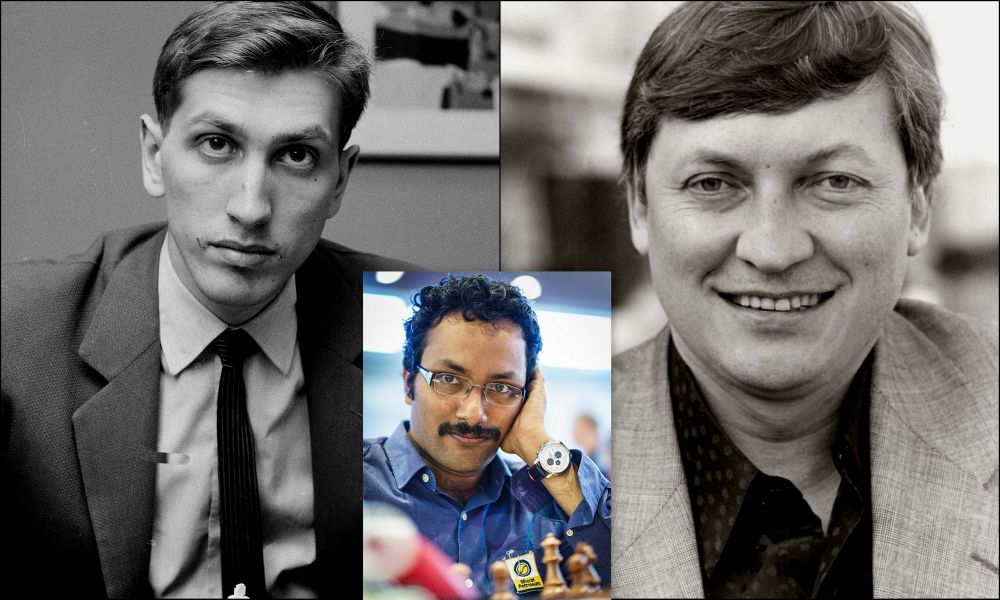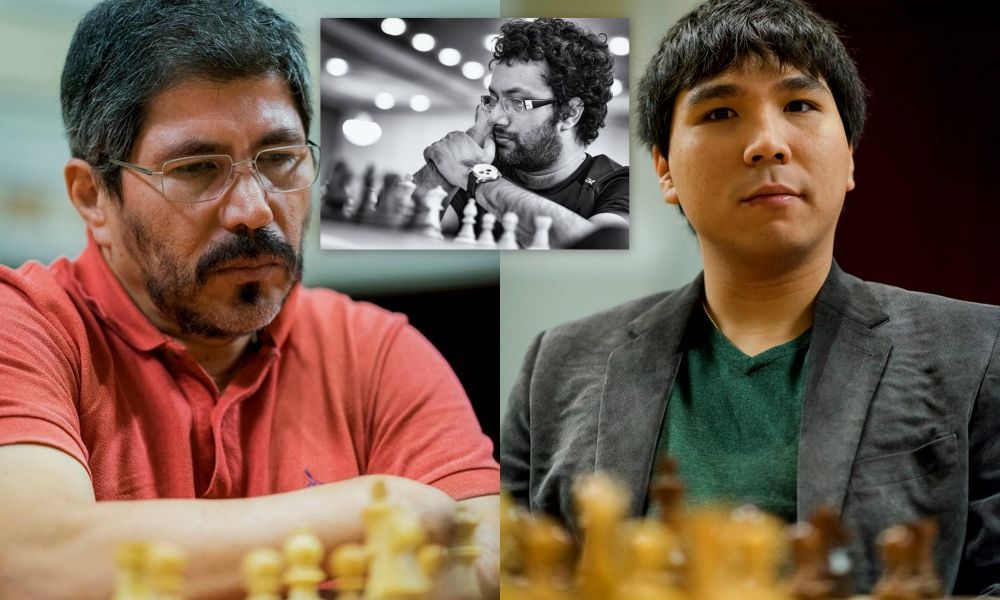You are your own enemy
It is believed that the hardest battle one can have is with their own self. We often doubt ourselves, question our decisions, judgments, wonder if we could have done something differently. Once we are past the battle with ourselves, we are ready to conquer whatever we put our mind to. The things we know to be as correct, can sometimes prove to be not. Automatic decisions and moves can prove to have quite the opposite of our desired result. GM Sundararajan Kidambi explains the beautiful concept of using your opponent's piece to your advantage instead of always being bent on recapturing a piece, pawn in this particular case. Check out the detailed analysis by Kidambi and enrich your knowledge. Photo: Shahid Ahmed
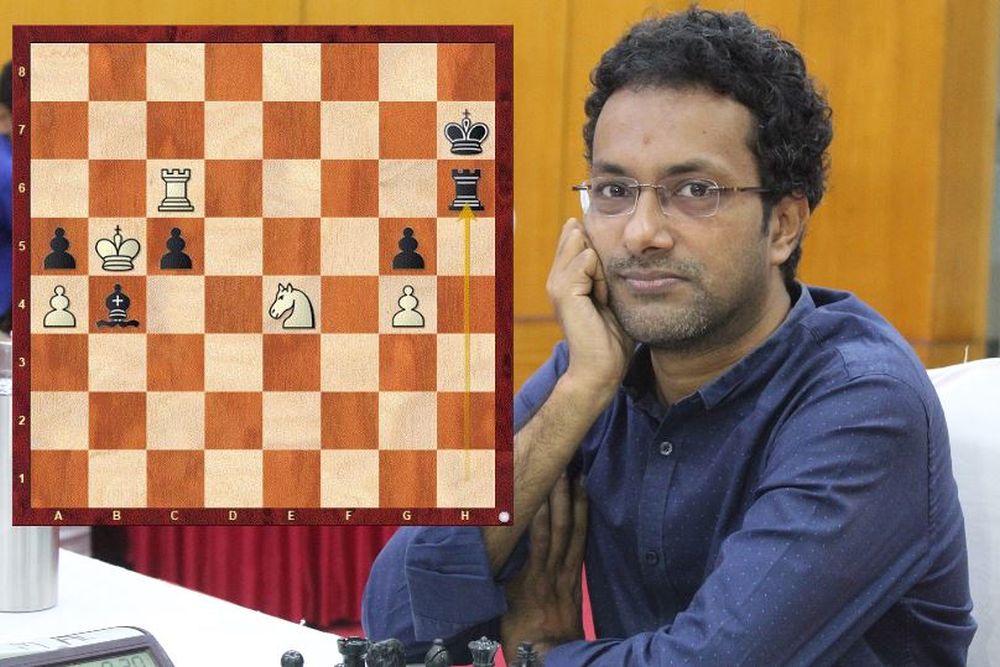

"आत्मैव ह्यात्मनो बन्धुरात्मैव रिपुरात्मन:"
- Bhagavad Gita
The above quote from the Bhagavath Geetha (the dialogue between Lord Krishna and Arjuna) means that the Self is one's own and friend and that it is also its own enemy! The verse is quite philosophical and has its own deeper meanings for the seeker. However, my idea of quoting the above statement was not with that in mind. From the perspective of a chess, can a unit of our army be a friend or foe depending on the circumstances? From experience, we know that the answer is a resounding, yes!
While coming across a recent game of Nihal Sarin, these thoughts about a typical chess strategy emerged, which I will try and enlist to arouse the curiosity of the interested reader.
Nihal - Kuzubov, ECC 2022

We join the position after Black's 63rd move. Nihal played a fine game and outplayed Kuzubov from a balanced position and reached here. White's exceedingly active king and active pieces along with the fact that the Black's bishop is sort of helpless in attack seem to show that White has a big advantage. At the moment White is a pawn down, but this is not of much relevance as all Black's remaining pawns are weak and can be captured sooner or later. White continued with the obvious tempo gaining capture
64.Nxg5+ Kg7 65. Rxh6 Kxh6 66. Ne4 Kg6 67. Nxc5 Kg5 68. Nb3 Kxg4 69. Nxa5 Be1 70. Nc4 Kf5 71. a5 Bxa5 72. Na5 and the game was drawn.
It is a bit surprising that the game ended in draw so soon, when it looked like White was dominating. Readers can pause and try and find how Nihal could have improved before reading further.
Let us turn our attention once again to the previous diagram, apart from the advantages that was listed earlier, there is one more feature which is, perhaps the most important. White has the choice of winning all of Black's pawns at will, but not all the pawns are of equal value! Ultimately, White wants to win the a-pawn and either queen it or collect Black's bishop for the same. As regards Black's counterplay he would strive to give up his bishop for the a-pawn and let his king eliminate White's only other pawn on the kingside. When we understand this factor we also see the importance of Black's pawn on g5 from our perspective! It impedes his own king from getting at White's pawn on g4, so Black's pawn effectively is the saviour of White's g4 pawn!!
This meant that White had to resist the allure of capturing the g-pawn with a check and instead could have calmly continued with
64. Rxh6 Kxh6 66. Nxc5 an illustrative line would be as follows:
66...Kg6 67. Nb7 Kf6 68. Na5 Be1 69. Nc6!
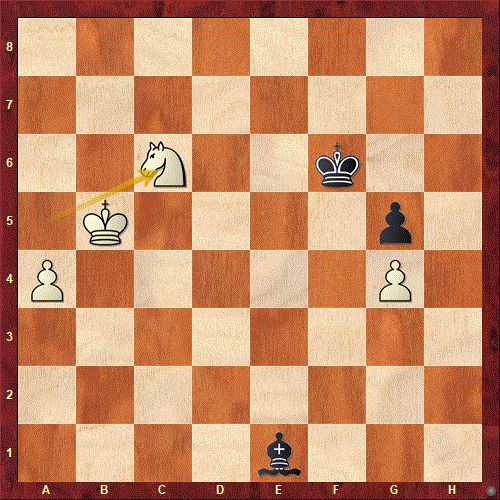
and White has achieved a domination like in the Kasparian's book of 2545 studies! 69...Ke6 will be answered by 70. Nd4+ and e5 is a mine that the black king cannot step on due to the fork.
The whole game was wonderfully played by Nihal in the style of Smyslov and it was a pity that he could not win the game with the non-capture! After looking at this game, it was impossible to not let my thoughts wander towards the very famous Karpov-Kasparov game 9 from their 1984 match.
Karpov - Kasparov, Game 9, 1984
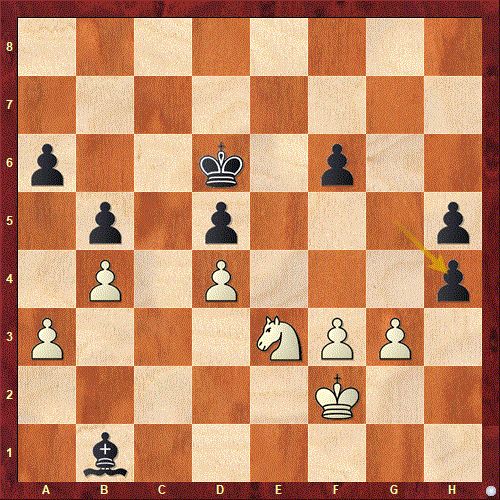
This is a very famous position after Black's erroneous 46th move ...gxh4. Here Karpov played the celebrated 47. Ng2!!
Instead of recapturing on h4 with the pawn. Here too it is the same principle, if White had a pawn on h4, his king would be blocked from accessing that square and getting an entry further down into enemy's camp. So White willingly sacrifices the h4-pawn for utilizing the space for his king.
One more position from the same game warrants attention.
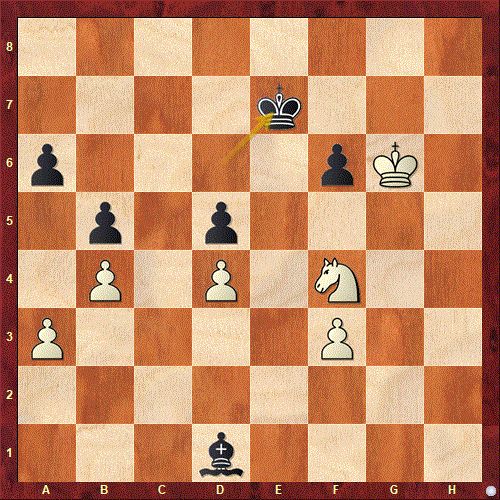
This is the position after Black's 54th move and here White could not resist capturing the d5-pawn with the check!
54.Nxd5+? Ke6
Instead, Kasparov and several other annotators give 54...Kd6 55. Nf6/Nc3 Bxf3 to be a draw. This follows the exact principle we discussed earlier, the d5-pawn was blocking Black's king from marching forward to attack White's pawn on d4 and so the d5-square being available to the king is more important than the pawn on d5! This idea was missed by the legends like Karpov and Kasparov too, in the same game!
55.Nc7+ and the game went on where Kasparov lost after further errors. But as analysts like Kasparov himself, Marin, Dvoretsky, Marin and Mueller have pointed out Black still retained the draw at various other points in the game. The lines become more and more complex, but the central idea is that Black keeps fighting because of the activity of the King. Here Black draws with 56....Kd6! as pointed out by Averbakh. Instead, Kasparov chose the passive 56....Kd7? and ultimately lost.
Going back to the previous diagram, Karpov should have instead continued with 54. Nh5!! eschewing the temptation to capture the pawn with the check and let Black's d-pawn live! This endgame was deeply analyzed by Marin and Dvoretsky and they came to the conclusion that White is indeed winning in the end in 2005. But there is a striking similarity between both games in the principle of letting opponent's pawn be his own source of destruction!
Things do not stop here; I also would like to point out a game between two engines to illustrate the same concept.
Stockfish - Komodo, 2020
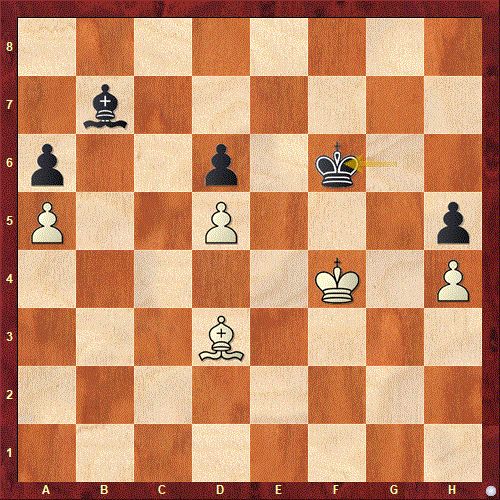
This highly complex endgame was analyzed by IM Danny Rensch, and Peter Doggers also wrote an article about this couple of years ago. Black has two big weaknesses on h5 and a6 which are usually sufficient for the opponent to force a victory. Here, however the unique arrangement of pawn structure is such that, Black can stay passive with his bishop on c8 and king shuttling between h6 and f6 and maintain a blockade. The most important feature is that White's king does not have an entry point to infiltrate to Black's queenside. Stockfish took care of the idea brilliantly by using Zugzwang to lose its own pawn on d5.
99.Bf5!! forcing Black to capture on d5
99...Bxd5 100. Bd3 Bb7 101.Bc4!
and White effectively used Zugzwang idea to infiltrate with his king into the opponent's camp using the d5-square as the key transit point!
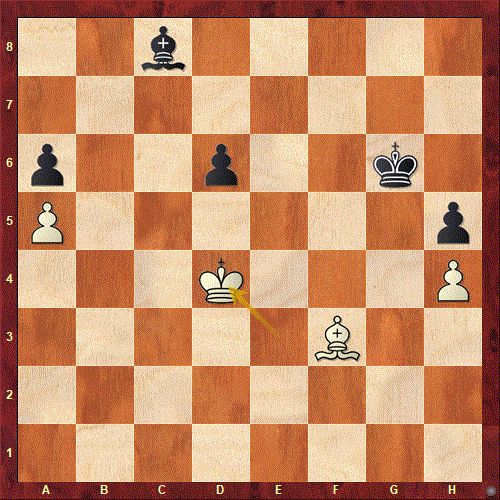
White reached this position later on the game and won in an efficient manner.
On this note I would like to narrate a story which has been narrated by the exemplary storyteller and my friend International Master V Saravanan. This goes back to end of 90s when Harikrishna as a very young kid was under the tutelage of International Master and endgame expert V Koshy. Saravanan had gone to visit them one particular day and they were analyzing an endgame. At a given moment both Saravanan and Koshy had assumed that a particular recapture of a pawn was automatic, when Hari suggested an alternative saying, "Let us not capture that pawn, it is our friend! " . Although I have not seen the position, I am assuming Saravanan was talking about this concept
Conclusion:
1. In chess, we cannot capture our own pieces and pawns. It can so happen that our own forces impede us from achieving our objective, so finding an effective way of sacrificing them can be the way to go forward!
2. To be more specific, our own pawns can be a shield for the opponent as they prevent the access to our pieces (especially the king) to get at the opponent.
3. Similarly, we can extrapolate it to opponent's pawns and should sometimes restrain from capturing them (even with a check!) if they inhibit the activity of their own monarch!
The games with analysis by Kasparov of his own game from his matches against Karpov book and Dejan Bojkov's analysis of the Stockfish game from chess.com blog are enclosed apart from Nihal's game as a replayable board below.
Replay the games
About the author
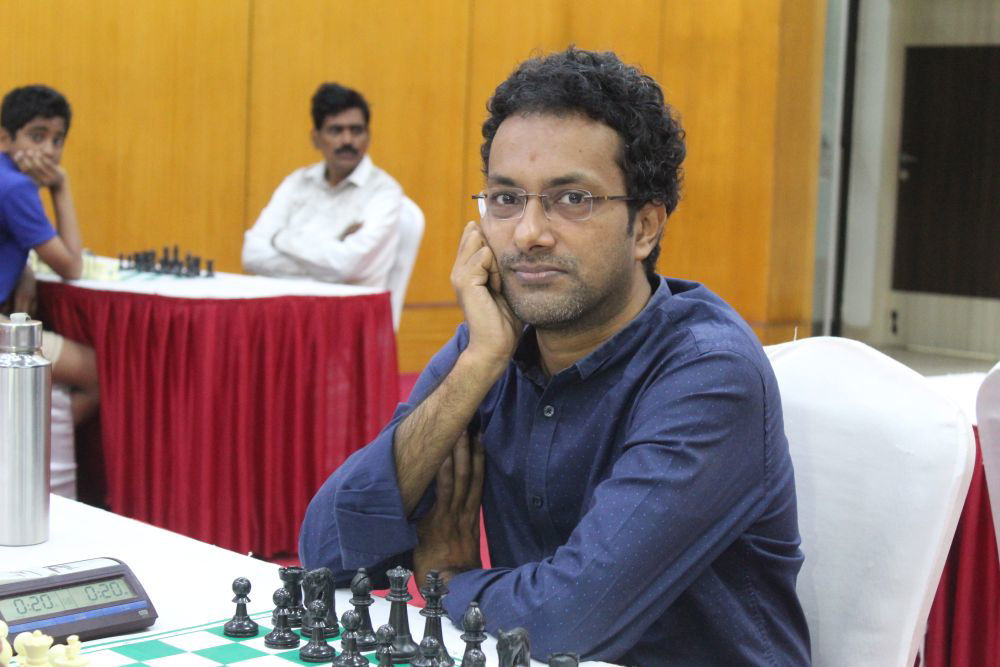
ChessBase India is happy to see GM Sundararajan Kidambi writing his seventh post of the year 2022 in his blog "Musings on Chess". Knowing what an encyclopedic knowledge the grandmaster from Chennai possesses, I think we are in for a treat! One can only hope that Kidambi continues writing regularly! We will keep reminding him about it! We are awaiting to read his first post of the year 2022 and be enriched.
Links
The article was edited by Shahid Ahmed



